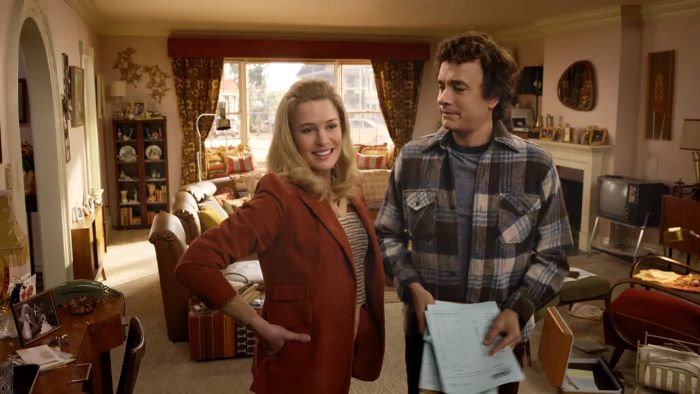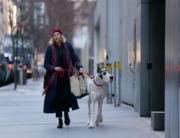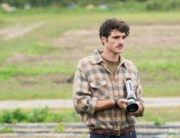In this particular moment for the film industry, artistic experimentation is only welcomed as long as it’s profitable. (Look at James Cameron and his quixotic Avatar and its sequels.) This context is crucial when considering Here, the new narrative and visual experiment from Robert Zemeckis, which boldly makes the “mistake” of being too ambitious for its own good and too old-fashioned for the cool kids to care about—except to dismiss it. But you know what? That’s their loss, and some will eventually discover it with pleasure and amazement.
Based on a graphic novel by Richard McGuire, with a screenplay co-written by Zemeckis and Eric Roth, Here is a sort of family reunion that brings back much of the team behind Forrest Gump: the screenwriters, cinematographer Don Burgess, composer Alan Silvestri, and, as if that weren’t enough, stars Tom Hanks and Robin Wright. Of course, in 2024, nostalgia for the unfairly maligned Oscar-winning movie is far from in vogue. Yet the team has managed to create something that is simultaneously inventive and extraordinary in terms of its creative process, albeit disjointed and frustrating for those who don’t buy into the premise and execution from the get-go.
With the camera fixed in one spot throughout the entire film (except for the final scene), the passage of time is depicted as a relentless march of images and changing scenery that portray the lives of several families and the geographical evolution of a plot of land in Pennsylvania. Sometimes we see the bare earth at that spot (where dinosaurs once roamed, a Native American couple consummated their love, or where soldiers rested during the American War of Independence), but the lens primarily focuses on the house built there and its various occupants over the past two or three centuries.
At first, the focal point represents a path leading to the estate belonging to Benjamin Franklin’s family, whose grand mansion is seen in the distance (and the historical figure appears on a few occasions riding a carriage). The exterior later becomes a dynamic interior after a house is built: a living room through which all kinds of occupants pass, living ordinary lives during their temporary stays in that place. This is elevated by the ever-changing production design as the timeline moves back and forth. It’s as though Yasujir? Ozu’s static camera were adapted to the budget and technology of a film conceived by Steven Spielberg. You’ve never seen anything quite like it.
Families come and go: an aviator who could leave his wife widowed and daughter orphaned due to the risks of flying in the early 20th century; a 1920s couple who put their faith in a recliner chair he’s perfecting (which becomes the prototype that will give birth to the La-Z-Boy brand); or, later, in the COVID era, African American parents advising their teenage son on how to handle potentially dangerous encounters with the police.
These fleeting vignettes coexist with the central portrait of three generations of the Young family from the 20th to the 21st century: World War II veteran Al (Paul Bettany) and his wife Rose (Kelly Reilly); their eldest son Richard (Hanks), who marries Margaret (Wright), his high school sweetheart, after an “accidental” pregnancy. Hanks and Wright play their characters from youth to old age, using makeup and de-aging technology, which has improved since its use in The Irishman.
Hanks, in particular, is convincing in his teenage scenes, perhaps because the actor has mastered playing the innocent man-child like no one else (Big, Forrest Gump), while Wright delivers the film’s best performance. Her monologue on Margaret’s 50th birthday is bittersweet and emotionally anchors the film’s central thesis: how quickly time passes and how easily our lives can be wasted when we neglect our dreams, ambitions, and expectations. Another recurring theme is the characters’ relationship with money and financial security and how this drains and exhausts their lives in exchange for small rewards.
A single geographic point is enough to embrace the breadth of the human experience: weddings, funerals, births, deaths, separations, and miraculous recoveries of lost memories. Here marks a welcome return to form for Zemeckis after a few years as the thankless force behind streaming movies (The Witches and Pinocchio, remakes that no one asked for). He once again combines his mostly effective sentimentality with the wizardry in visual effects that has characterized his work. It’s important to note that the immovable shot never becomes dull, thanks to impeccable editing and art direction.
Meanwhile, the nonlinear narrative has timelines overlapping poetically, creating an extraordinary collage of images and sounds. This paves the way for admirable creative choices: a mirror in one era reflects a previously unseen side of the house from another time, a 1960s Beatles song serenades in earlier or later decades, and the house’s facade dismantles for a glimpse of what’s happening outside. Zemeckis revels in the experiment and its endless possibilities, and there’s no reason to resist it, especially when the heart of his drama couldn’t be in a better place. A little schmaltz these days shouldn’t scare us. Here is almost an art installation, an accessible narrative deserving of respect and affection.

















Leave A Comment